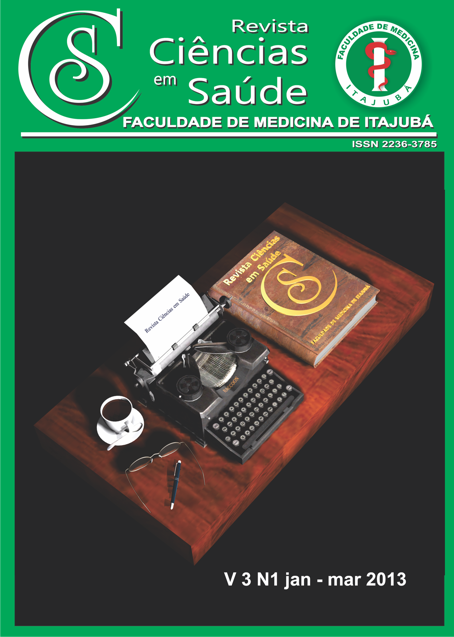Síndrome do Ligamento Arqueado Mediano - Relato de Caso/ Median Arcuate Ligament Syndrome – Case Report
Main Article Content
Abstract
Introdução: A Síndrome do Ligamento Arqueado Mediano, também denominada Síndrome da Compressão do Tronco Celíaco decorre da compressão do Tronco Celíaco pelo ligamento Arqueado Mediano, comprometendo o fluxo sanguíneo e causando sintomas. O grau de compressão varia com as fases do ciclo respiratório, devido a mobilidade das estruturas, sendo maior na expiração. Casuística: O trabalho relata o caso de uma paciente com quadro de dor abdominal crônica, mal definida, há cerca de 25 anos. Os sintomas eram desencadeados pela ingestão de alimentos. Foram realizados exames de imagem para investigação diagnóstica que demonstraram alterações típicas da compressão do Tronco Celíaco pelo Ligamento Arqueado Mediano, como o aspecto em “gancho” na angiotomografia multislice do abdome e aumento das velocidades sistólica e diastólica, no estudo ultrassonográfico com Doppler. Discussão: Diante do quadro clínico apresentado pela paciente, estabeleceu-se o diagnóstico da Síndrome do Ligamento Arqueado Mediano, caracterizada pelos achados imagenológicos citados, associados aos sintomas de dor abdominal crônica, mal definida, geralmente desencadeada pela alimentação. Os estudos de imagem também permitiram a exclusão de outras patologias que poderiam ser a causa das dores da paciente. Conclusão: Os achados de imagem são fundamentais para o diagnóstico da síndrome, pois quando presentes têm alta especificidade e ainda podem excluir outras condições que poderiam causar dor abdominal crônica. O tratamento consiste na secção do ligamento, sua indicação ainda permanece controversa na literatura.
Palavras chave: Ligamento Arqueado Mediano, tronco celíaco, compressão vascular.
ABSTRACT
Introduction: The Median Arcuate Ligament Syndrome, also called Syndrome Compression of the results from of Celiac Trunk compression by the ligament Arched Median, compromising blood flow and causing symptoms. The degree of compression varies with the phases of the respiratory cycle, because of the mobility of the structures, being greater during expiration. Case report: The case reports a history of a patient with chronic abdominal pain, ill-defined, about 25 years. The symptoms were triggered by the ingestion of food .Performed imaging exams that showed changes typical of compression of the Celiac Trunk by Median arcuate ligament, as the appearance of "hook" on multislice CT angiography of the abdomen and increase in systolic and diastolic velocities at Doppler ultrasonographic examinations. Discussion: Given the clinical history presented by the patient, we established the diagnosis of Median Arcuate Ligament Syndrome, characterized by the above imaging findings and symptoms associated with chronic abdominal pain, ill-defined, usually triggered by food. Imaging studies also allowed the exclusion of other pathologies that could be the cause of the patient’s pain. Conclusion: The imaging findings are essential for the diagnosis of the syndrome, because they have high specificity and can still rule out other conditions that could cause abdominal pain chronic. The treatment consists in section of the ligament, its indication is still controversial in literature.
Key words: Arcuate ligament, celiac trunk, vascular compression
Article Details
Authors maintain copyright and grant the HSJ the right to first publication. From 2024, the publications wiil be licensed under Attribution 4.0 International 
 , allowing their sharing, recognizing the authorship and initial publication in this journal.
, allowing their sharing, recognizing the authorship and initial publication in this journal.
Authors are authorized to assume additional contracts separately for the non-exclusive distribution of the version of the work published in this journal (e.g., publishing in an institutional repository or as a book chapter), with acknowledgment of authorship and initial publication in this journal.
Authors are encouraged to publish and distribute their work online (e.g., in institutional repositories or on their personal page) at any point after the editorial process.
Also, the AUTHOR is informed and consents that the HSJ can incorporate his article into existing or future scientific databases and indexers, under the conditions defined by the latter at all times, which will involve, at least, the possibility that the holders of these databases can perform the following actions on the article.

